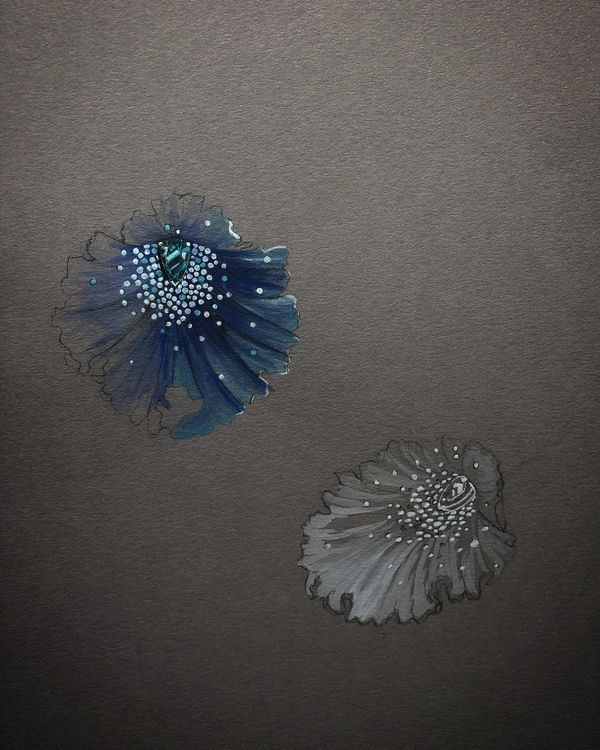Emmanuel Tarpin at home in the 7th arrondissement in Paris.
Born in the town of Annecy, award-winning jeweler Emmanuel Tarpin studied at HEAD, Geneva's distinguished school of art and design, before beginning an internship in the high jewelry workshop of Van Cleef & Arpels. Tarpin's natural talent was quickly identified, and he was offered a full-time job at the atelier world-renowned for manufacturing premier quality jewels.
Inspired by British contemporary sculptor and land artist Andy Goldsworthy, Tarpin practiced sculpture for thirteen years. Lightweight and not easily corroded, aluminum is his signature medium. The flexible material allows him to replicate the floral, shell and leaf shapes that excite him in nature with an incredible likeness. Beyond Goldsworthy, who Tarpin credits for bridging the connection between art and nature, the jeweler also finds inspiration in the dramatic chiaroscuro of Italian paintings by Caravaggio and the uncertain three-dimensionality of Kinetic art.
Tarpin lives and works in Paris.

PHILLIPS: Is there a specific space or object within your home or studio that you draw inspiration from, or return to, when thinking about new ideas for your work?
EMMANUEL TARPIN: I am very lucky to live in a very beautiful place in Paris, on the 7th arrondissement. I have a spacious terrasse where I planted a lot of flowers, some from the French Alps, some from more exotic places. This is a real peaceful place where I can find inspiration and calm. I can pick up sometimes some leaves or small elements to work on my maquettes and have an idea of volumes textures and colors I'm looking for.
P: When deciding which materials you use in your work, what are the most important factors you consider? Are there any materials you’d like to explore next that you haven’t tried yet?
ET: I work in a very spontaneous way. When I have an inspiration, I do some quick sketches then I need to visualize volumes by doing maquettes in 3d in wax or paper. At this moment, I already know which materials I will use, depending on which effects I want. I love to experiment so of course, there is a lot of new materials to explore and I will never stop to enrich my researches.
P: What challenges do you often face in your design or creative process?
ET: I do only one-of-a-kind pieces. Each piece is about new materials, colors, volumes or textures, every time this is a new experience and we discover things at the same time we are making the piece which is a real challenge.
Also for each piece, there are a lot of technical challenges like finding a good color, good finishing...

P: Having to step away from your usual day to day schedule, is there a book/film/project you’ll take this opportunity to begin (or return to)?
ET: I always traveled a lot, traveling is a passion since my childhood. To meet different people, different cultures offer you the feeling of freedom, openness brings you inspiration. One of my dream projects would be to return to the Philippines for a few months to collaborate with a coral protection organization or animal welfare. Nature is part of me, it gives me creativity and I want to give back my help to preserve it.
P: Where is the future of your practice headed?
ET: A friend asked me a few times ago if I consider my work as a work of art. it was an unexpected question because for me, generally speaking, Jewelry is an Art. So this is not about my own designs, jewelry is a way of expression,
It's like a painting, sculpture to wear. This is not only about precious materials, this is especially about design, personality and feelings. A jewel can be a total outfit.
